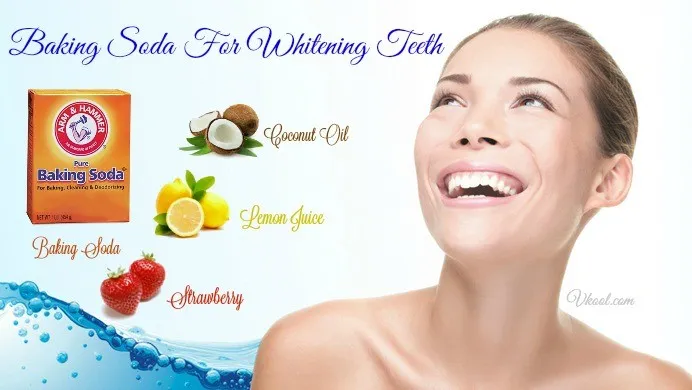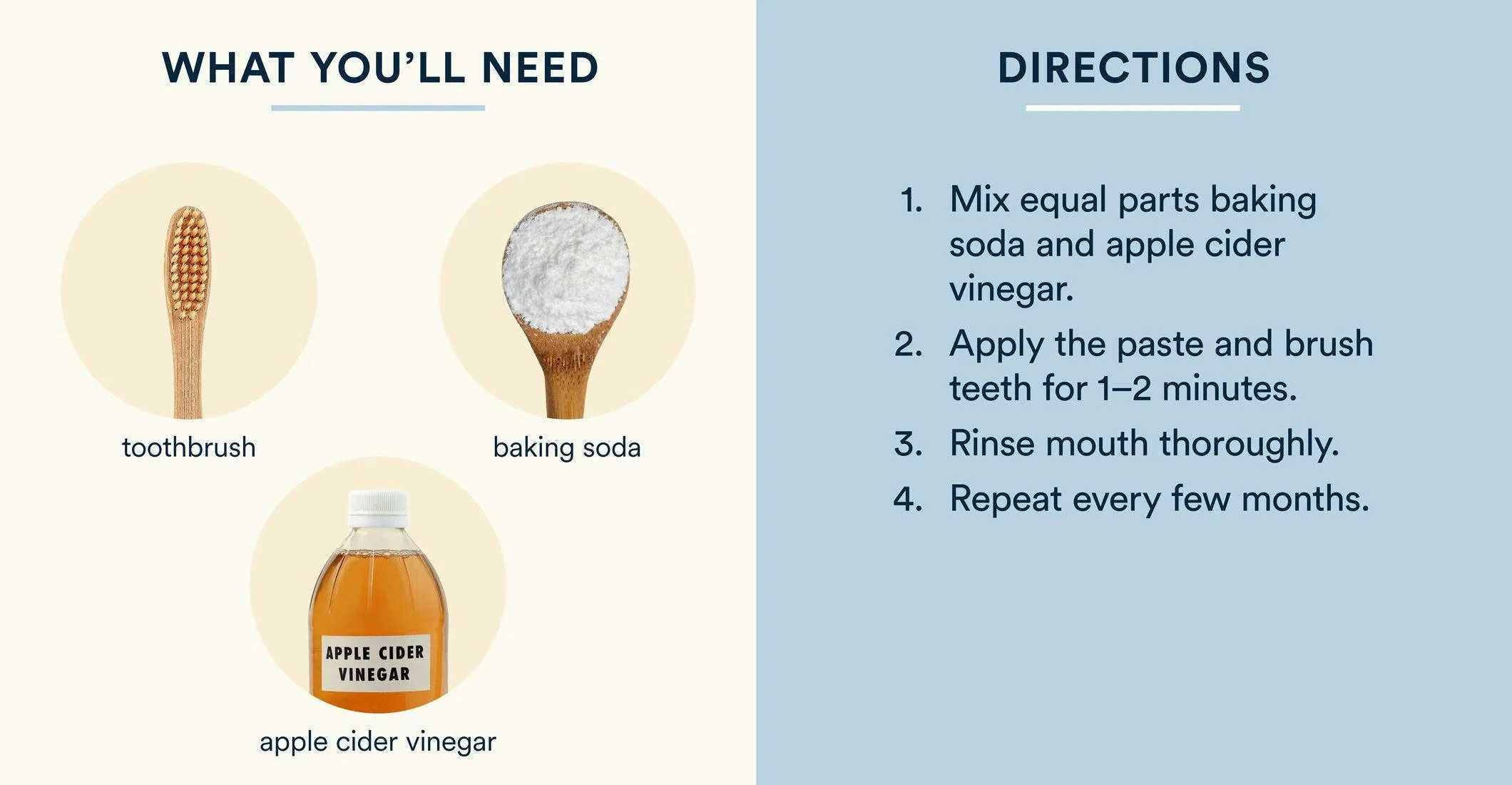What is Baking Soda Teeth Whitening
Baking soda teeth whitening is a popular DIY method that people use to brighten their smiles. Sodium bicarbonate, or baking soda, is a mild abrasive that can help to remove surface stains from your teeth. The method has gained traction as a cost-effective alternative to professional whitening treatments or expensive over-the-counter products. People are increasingly looking for natural and affordable ways to enhance their appearance, and baking soda seems like a convenient option. However, it’s important to approach this method with awareness of both the potential benefits and risks. Understanding how baking soda works and the correct ways to use it is crucial for ensuring your oral health.
How Does Baking Soda Whiten Teeth
Baking soda works primarily through a mechanical action. It is a very mild abrasive, which means that when you brush with it, it helps to scrub away the surface stains that accumulate on your teeth over time. These stains come from foods, drinks, and lifestyle habits like smoking. Unlike chemical whitening agents, baking soda doesn’t change the intrinsic color of your teeth. Instead, it polishes away the extrinsic stains, giving the appearance of a brighter smile. Furthermore, baking soda has some mild antibacterial properties, which can contribute to overall oral hygiene by reducing the amount of bacteria in your mouth. This can lead to fresher breath and potentially reduce the risk of cavities.
The Benefits of Baking Soda for Teeth Whitening

One of the main benefits of baking soda teeth whitening is its affordability and accessibility. Baking soda is inexpensive and readily available in most households and grocery stores. This makes it a convenient option for anyone looking to improve their smile without breaking the bank. Another advantage is its gentle abrasiveness, which can effectively remove surface stains without causing significant damage when used correctly. Some people also find that baking soda helps to neutralize acids in the mouth, which can contribute to a healthier oral environment. Over time, this may lead to fewer cavities and improved gum health. In addition, some individuals appreciate the natural aspect of using baking soda, preferring it over products with harsh chemicals.
Is Baking Soda Safe for Teeth
While baking soda is generally considered safe for teeth whitening, it’s important to use it with caution. The mild abrasive nature of baking soda means that excessive or improper use can potentially damage tooth enamel, leading to increased sensitivity and a higher risk of cavities. Dentists recommend using baking soda sparingly, perhaps once or twice a week, and always with a soft-bristled toothbrush. It is also important to be aware of any pre-existing dental conditions, such as sensitive teeth or gum disease, as baking soda may exacerbate these issues. If you experience any discomfort or sensitivity, discontinue use immediately and consult with your dentist.
Step-by-Step Guide to Baking Soda Teeth Whitening
Before you start, gather your materials. You will need baking soda, a soft-bristled toothbrush, and water. It is advisable to have a cup or small bowl for mixing. The steps for using baking soda for teeth whitening involve these steps. First, moisten your toothbrush with water. Next, add a small amount of baking soda, usually about the size of a pea, to your toothbrush. Gently brush your teeth in circular motions for about two minutes, being careful not to apply too much pressure. After brushing, rinse your mouth thoroughly with water to remove any remaining baking soda. It’s crucial to use this method sparingly to avoid enamel damage. Always consult with a dentist for personalized advice.
Method 1 Baking Soda and Water

The simplest method involves mixing baking soda with water to create a paste. The process is straightforward. Mix a small amount of baking soda (about a teaspoon) with enough water to form a paste. Apply the paste to your toothbrush and gently brush your teeth for about two minutes. This simple approach is a quick and easy way to start using baking soda for teeth whitening. It relies on the abrasive properties of baking soda to remove surface stains and give your teeth a brighter appearance. Remember to rinse your mouth thoroughly after brushing to remove any remaining baking soda and ensure that you do not overdo it to prevent enamel damage.
Method 2 Baking Soda and Hydrogen Peroxide
Combining baking soda with hydrogen peroxide creates a more potent teeth-whitening solution. Hydrogen peroxide acts as a bleaching agent, while baking soda provides the cleaning action. To make this mixture, combine baking soda with a small amount of 3% hydrogen peroxide until you achieve a paste-like consistency. Brush your teeth gently with this mixture for about two minutes, then rinse thoroughly. This method enhances the whitening effect due to the bleaching properties of hydrogen peroxide. However, because of the added strength, it’s especially important to be cautious and avoid overusing this method. Using it too frequently can increase the risk of enamel damage and tooth sensitivity. It’s also advisable to consult a dentist before trying this method, especially if you have sensitive teeth.
Method 3 Baking Soda and Coconut Oil
Combining baking soda with coconut oil offers a gentler, more natural approach to teeth whitening. Coconut oil has antibacterial properties and can help remove plaque and bacteria. To make this mixture, combine equal parts baking soda and coconut oil to create a paste. Brush your teeth with this mixture for about two minutes, then rinse thoroughly. This method provides a gentler approach, making it suitable for people with sensitive teeth. The coconut oil also contributes to the overall oral health by moisturizing the gums and reducing inflammation. This mixture is often considered a more palatable alternative to the plain baking soda and water method, as the coconut oil adds a pleasant taste and texture. It’s essential to choose high-quality, unrefined coconut oil for best results.
Tips for Safe and Effective Baking Soda Use

To ensure safe and effective use of baking soda for teeth whitening, follow these tips. First, use a soft-bristled toothbrush to minimize abrasion. Apply gentle pressure when brushing to avoid damaging enamel. Limit the frequency of use to once or twice a week to prevent enamel erosion. Always rinse your mouth thoroughly after brushing to remove any remaining baking soda. Consider consulting with your dentist before incorporating baking soda into your oral hygiene routine. They can assess your oral health and provide personalized advice. Moreover, if you experience any sensitivity or discomfort, stop using baking soda immediately. Lastly, maintain regular dental check-ups and professional cleanings to maintain optimal oral health.
Potential Risks and Side Effects
While baking soda is generally safe, it’s important to be aware of potential risks. Overuse can erode tooth enamel, leading to increased sensitivity, especially to hot and cold temperatures. Excessive abrasion can also make your teeth more susceptible to cavities and other dental problems. Some people may experience gum irritation or inflammation. In rare cases, baking soda can cause an allergic reaction. If you notice any signs of these side effects, stop using baking soda immediately and consult your dentist. If you have pre-existing dental conditions, like sensitive teeth or gum disease, consult your dentist before use. They can guide you on whether or not baking soda is a suitable option for your specific oral health needs.
Alternatives to Baking Soda for Teeth Whitening
If you prefer alternatives to baking soda, several other teeth-whitening options are available. Over-the-counter whitening products, such as whitening strips, gels, and toothpastes, often contain hydrogen peroxide or other bleaching agents. These products are generally safe when used according to instructions and can be effective in removing stains. Professional teeth whitening by a dentist is another option. Dentists can provide in-office treatments or custom-fitted trays for at-home use, using higher concentrations of whitening agents than over-the-counter products. For a more natural approach, you can explore oil pulling with coconut oil, which helps remove bacteria and toxins. Always consult your dentist for the best recommendation tailored to your oral health needs.
In conclusion, while baking soda can be a cost-effective way to whiten teeth, it should be used with caution. By understanding the benefits, risks, and proper techniques, you can make an informed decision about whether this method is right for you. Remember to always prioritize your oral health and consult with your dentist for personalized advice and recommendations. A brighter smile is achievable, but safety should always come first.
